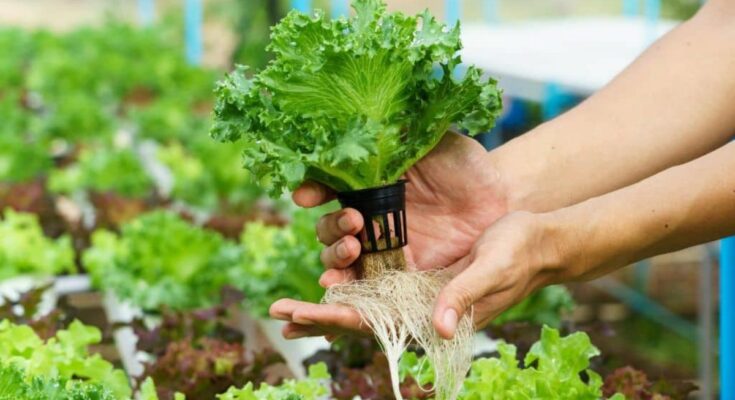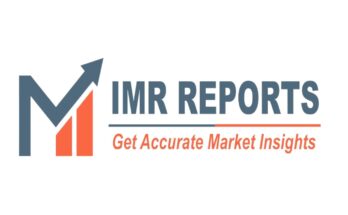Saudi Arabia Hydroponics Market has valued at USD 48.32 Million in 2023 and is anticipated to project steady growth in the forecast period with a CAGR of 7.41% through 2029. Hydroponics is a form of horticulture where plants are grown without soil, instead using mineral nutrient solutions in water. This method allows plants to receive the precise nutrients they need directly to their roots, enhancing growth rates and yield.
Hydroponics is particularly beneficial in areas with infertile land or inadequate rainfall, and it promotes water conservation as the water in the system can be reused. Moreover, it offers the ability to grow crops year-round in controlled conditions, irrespective of the outdoor climate.
The Hydroponics market in Saudi Arabia is on a significant growth trajectory, driven by the country’s focus on achieving agricultural sustainability and food security. As part of the Saudi Vision 2030 plan, the promotion of hydroponic farming is a key initiative, aimed at overcoming challenges related to scant rainfall and arid land conditions.
As a result, a number of hydroponic farms are burgeoning across the Kingdom, offering high-quality, locally-grown produce year-round. The support from the government, coupled with technological advancements, is providing further impetus to the hydroponic sector in the country, positioning it as a promising space for investment and agricultural development.
Download FREE Sample Report @ https://www.techsciresearch.com/sample-report.aspx?cid=8086
Key Market Drivers
Water Scarcity & Efficient Resource Utilization
One of the primary drivers propelling the Saudi Arabia Hydroponics Market is the issue of water scarcity. In a country with arid climatic conditions and limited freshwater resources, traditional soil-based agriculture faces challenges related to water availability and efficient resource utilization. Hydroponics, as a soilless cultivation method, allows for significantly reduced water usage compared to conventional farming. Hydroponic systems, which utilize recirculating nutrient solutions, offer a sustainable and innovative solution for agricultural practices in Saudi Arabia. With their efficient water circulation and reuse mechanisms, hydroponics not only minimize wastage but also address the pressing issue of water scarcity in the region. This water-saving aspect becomes a crucial driver for the adoption of hydroponics, aligning perfectly with Saudi Arabia’s commitment to sustainable agriculture and resource preservation.
By implementing hydroponic systems, Saudi Arabia can enhance its food production capacity while simultaneously preserving precious water resources and promoting a greener and more environmentally friendly future. This advanced agricultural technique allows for precise control over nutrient delivery to plants, optimizing growth and minimizing the use of chemical fertilizers. Moreover, hydroponics offer the potential for year-round cultivation, reducing the country’s dependence on imported produce and ensuring food security.
The adoption of hydroponic systems in Saudi Arabia not only holds promise for increased agricultural productivity but also presents an opportunity for research and development in the field of sustainable farming practices. By investing in this technology, the country can pave the way for innovative solutions that can be shared and applied globally, contributing to the overall advancement of sustainable agriculture worldwide.
Controlled Environment Agriculture (CEA) for Year-Round Production
The adoption of Controlled Environment Agriculture (CEA) is a key driver for the Saudi Arabia Hydroponics Market. Hydroponic systems can be integrated into greenhouse structures or indoor facilities, enabling precise control over environmental variables such as temperature, humidity, light, and nutrient levels. This level of control facilitates year-round production, overcoming the limitations imposed by the region’s extreme climate conditions.
The ability to cultivate crops consistently throughout the year, independent of external weather conditions, is a game-changer for food security and supply chain resilience. By adopting innovative practices such as hydroponics, which involves growing plants in nutrient-rich water instead of soil, coupled with controlled environment agriculture (CEA), which creates optimal growing conditions, Saudi Arabia is paving the way for sustainable and reliable food production. This strategic approach ensures a steady supply of fresh produce, reduces dependency on imports, and strengthens the nation’s commitment to self-sufficiency and environmental sustainability.
Key Market Players
- Saudi Erum – Hydroponics Company
- Desert Agriculture (Aljoaib Holdings)
- Green Mast
- Saudi Arabian Hydroponics Company
- High Tech Saudi Farms
Increasing Urbanization & Land Constraints
Rapid urbanization and the associated constraints on available agricultural land contribute to the growth of the Saudi Arabia Hydroponics Market. As cities expand and urban infrastructure develops, the availability of arable land diminishes. Hydroponic systems, requiring less space compared to traditional farming methods, offer a viable solution for cultivating crops in limited or urban areas.
Vertical farming, a modern agricultural technique known as hydroponics, revolutionizes space utilization by ingeniously stacking layers of crops vertically. By adopting this innovative vertical approach, urban areas can now witness remarkable improvements in crop yields within limited space constraints. This need to optimize land usage, particularly in the face of rapid urbanization, has become a significant driving force behind the widespread adoption of hydroponics in Saudi Arabia. As urban landscapes continue to evolve, this sustainable farming method offers a promising solution to ensure food security and maximize agricultural productivity in densely populated areas.
Enhanced Crop Productivity & Quality
The pursuit of enhanced crop productivity and quality serves as a driver for the Saudi Arabia Hydroponics Market. Hydroponic systems provide plants with direct access to a precisely controlled nutrient solution, resulting in optimized nutrient uptake. This controlled environment, coupled with the absence of soil-borne diseases, contributes to healthier and more vigorous plant growth.
Furthermore, hydroponics, a soilless cultivation method, offers the advantage of tailoring nutrient solutions to meet the unique needs of various crops. This customization results in not only higher yields and faster growth rates but also superior crop quality, meeting the growing demand for top-notch, locally grown produce.
Download FREE Sample Report @ https://www.techsciresearch.com/sample-report.aspx?cid=8086
As farmers seek ways to enhance productivity and maintain high quality, hydroponics stands out as a compelling solution for its potential to deliver exceptional results. By harnessing this innovative technique, growers can unlock a world of possibilities and redefine the future of sustainable agriculture.
Key Market Challenges
Initial Capital Investment & Operational Costs
One of the primary challenges facing the Saudi Arabia Hydroponics Market is the high initial capital investment and operational costs associated with setting up and maintaining hydroponic systems. While hydroponics offers significant advantages, including water efficiency and enhanced crop productivity, the establishment of hydroponic facilities requires substantial financial investment. The costs involve purchasing specialized equipment such as nutrient delivery systems, grow lights, and climate control systems, as well as constructing or retrofitting greenhouse structures.
The challenge of upfront capital expenditure can be a barrier for small-scale farmers or new entrants to the hydroponics sector. Additionally, ongoing operational costs, including electricity for lighting and environmental control, nutrient solutions, and skilled labor, contribute to the overall financial considerations. Overcoming the challenge of financial barriers requires strategic planning, access to funding or subsidies, and the development of cost-effective solutions to make hydroponics more accessible.
Lack of Technical Expertise & Training
Hydroponic farming requires specialized technical expertise and knowledge of system design, nutrient management, and environmental control. The challenge lies in the need for farmers and workers to acquire the necessary skills to operate and manage hydroponic systems effectively. Training programs and educational initiatives become crucial to bridge the knowledge gap and ensure the successful implementation of hydroponics in Saudi Arabia.
Related Reports
India Maleic Anhydride Market – Trends, Share [Latest] & Forecast
[2029] India Aniline Market Future, Outlook, Outlook, Segments
UAE Decorative Paints Market – [2029] Growth, Trends & Forecast
Table of Content-Saudi Arabia Hydroponics Market
- Product Overview
1.1. Market Definition
1.2. Scope of the Market
1.2.1. Markets Covered
1.2.2. Years Considered for Study
1.2.3. Key Market Segmentations
- Research Methodology
2.1. Objective of the Study
2.2. Baseline Methodology
2.3. Key Industry Partners
2.4. Major Association and Secondary Sources
2.5. Forecasting Methodology
2.6. Data Triangulation & Validation
2.7. Assumptions and Limitations
- Executive Summary
3.1. Overview of the Market
3.2. Overview of Key Market Segmentations
3.3. Overview of Key Market Players
3.4. Overview of Key Regions/Countries
3.5. Overview of Market Drivers, Challenges, Trends
- Voice of Customer
- Saudi Arabia Hydroponics Market Outlook
5.1. Market Size & Forecast
5.1.1. By Value
5.2. Market Share & Forecast
5.2.1. By Type (Aggregate Systems and Liquid Systems)
5.2.2. By Equipment (HVAC, LED Grow Light, Control Systems, Irrigation Systems, Others)
5.2.3. By Input (Nutrient and Growth Media)
5.2.4. By Farming Method (Indoor and Outdoor)
5.2.5. By Crop Type (Fruits & Vegetables, Flowers & Turfs, Others)
5.2.6. By Region
5.2.7. By Company (2023)
5.3. Market Map
- Western Hydroponics Market Outlook
6.1. Market Size & Forecast
6.1.1. By Value
6.2. Market Share & Forecast
6.2.1. By Type
6.2.2. By Equipment
6.2.3. By Input
6.2.4. By Farming Method
6.2.5. By Crop Type


